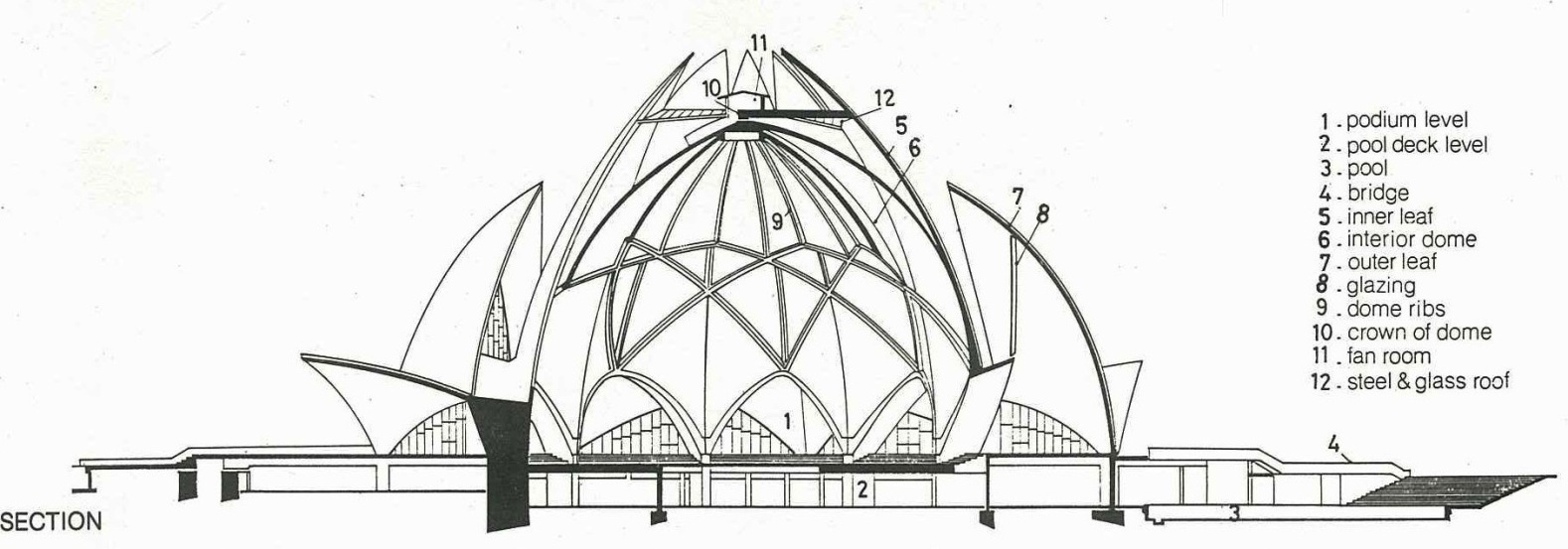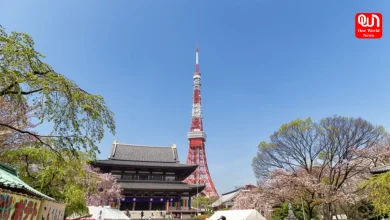The Lotus Temple of Delhi: A Marvel of Architecture and Symbol of Unity
Discover the history, architecture, and fascinating facts of the Lotus Temple of Delhi - an awe-inspiring masterpiece of contemporary design.

Explore the History, Facts, and Architecture of the Iconic Lotus Temple of Delhi, a Bahai House of Worship.
The Lotus Temple of Delhi, also known as the Bahá’í House of Worship, is a magnificent architectural marvel located in the heart of India, Delhi. It is an iconic landmark and one of the most visited tourist attractions in the city. The temple is a symbol of the Bahá’í Faith, a religion that emphasizes the unity of all religions and the oneness of humanity. In this article, we will explore the history, architecture, and interesting facts about the Lotus Temple.
History of Lotus Temple:
The idea of building a temple for the Bahá’í Faith in India dates back to the early 20th century. In 1953, an American architect named Joseph Allen Stein was commissioned by the Bahá’í community to design a temple in Delhi. However, due to financial constraints, the project was put on hold for several years.
It wasn’t until the mid-1970s that the Bahá’í community was able to raise enough funds to begin the construction of the Lotus Temple. The temple was designed by Iranian architect Fariborz Sahba, who had previously worked on several other Bahá’í temples around the world.
The temple’s construction started in 1980 and was completed in 1986. The temple was opened to the public in December of the same year. Since then, it has become one of the most visited tourist attractions in Delhi, attracting millions of visitors from all over the world.
Architecture of Lotus Temple:

The Lotus Temple is a unique and awe-inspiring architectural wonder that is shaped like a lotus flower. The temple is made of white marble and is surrounded by nine pools of water, which give it a serene and peaceful atmosphere. The lotus flower is a symbol of purity, enlightenment, and rebirth, which is in line with the teachings of the Bahá’í Faith.
The temple has 27 free-standing marble petals that are arranged in three rows, with each row containing nine petals. The petals are made of white marble and have been carefully crafted to give the impression of a lotus flower in full bloom. The temple is 34.27 meters high and has a diameter of 70 meters. It can house up to 2,500 persons at once.
The interior of the Lotus Temple is just as impressive as the exterior. The temple has a central prayer hall, which is surrounded by nine pools of water. The prayer hall is designed to be simple and devoid of any religious symbols or images, in line with the teachings of the Bahá’í Faith. The hall is also designed to be acoustically perfect, with no echo or reverberation, making it an ideal place for meditation and prayer.
Read more:- Delhi Zoo: Timings, Entry Fees, Location, Facts
Interesting facts about Lotus Temple:
- The Lotus Temple is one of the most visited tourist attractions in India, attracting millions of visitors every year.
- The temple is open to people of all religions, races, and backgrounds, and there are no restrictions on who can visit or worship there.
- The temple has won numerous architectural awards for its unique design and engineering.
- The Lotus Temple is often compared to the Sydney Opera House and the Eiffel Tower in terms of its architectural significance.
- The temple is surrounded by 26 acres of lush green gardens, which add to its serene and peaceful atmosphere.
- The construction of the temple took six years and involved the efforts of more than 800 engineers, technicians, and workers.
- The temple is designed to be environmentally friendly and has won several awards for its sustainable design.
- The temple has been featured in several Bollywood movies, making it a popular destination for film buffs.
- The Lotus Temple is the only Bahá’í House of Worship in India and one of only seven in the world.
- The temple has been visited by several world leaders and dignitaries, including the Dalai Lama, former US President Barack Obama, and former Secretary-General of the United Nations Ban Ki-moon.
- In addition to its religious significance, the Lotus Temple is also a popular destination for art and architecture enthusiasts. The temple has been featured in several art and architecture exhibitions around the world, and is considered one of the most important works of contemporary architecture in India.
- The Lotus Temple is also a symbol of India’s religious tolerance and unity. The temple is a place where people of all faiths can come together and worship in peace, reflecting the country’s diverse and inclusive culture.
In conclusion, the Lotus Temple is a magnificent architectural masterpiece that is not only a symbol of the Bahá’í Faith but also a symbol of India’s religious diversity and unity. Its distinct lotus-shaped design and tranquil atmosphere make it a popular tourist and local location. The temple’s commitment to environmental sustainability and its role as a platform for interfaith dialogue and understanding make it a truly inspiring place that embodies the spirit of India.
Like this post?
Register at One World News to never miss out on videos, celeb interviews, and best reads.







